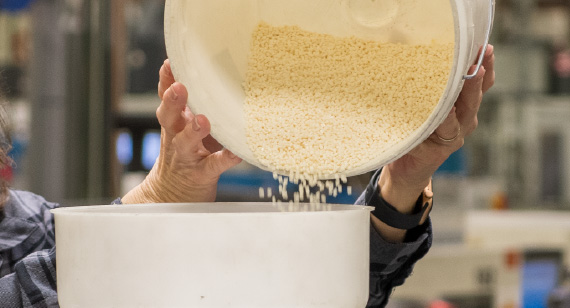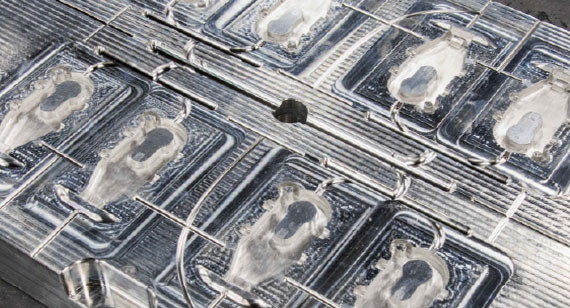How to Navigate Supply Challenges as Electronic and Autonomous Vehicle Development Ramps Up
Anyone who’s been out shopping for a new car or truck recently might be disappointed. Inventories are low, so that Iconic Silver F-150 XLT you were hoping for might end being an Oxford White Lariat instead. That, and there’s little room for negotiating, even on used cars. This is especially true in the electronic and autonomous vehicle (EV/AV) market, where buyers can expect to wait months, drive hundreds of miles, or pay top dollar—and sometimes all three—for any car, truck, or SUV with an EV in its name.
A semiconductor chip shortage is making things especially challenging for the automotive industry in general. This chip shortage is expected to cost the global automotive industry $110 billion in revenue in 2021.

These challenges are especially concerning for those automotive companies in the middle of unprecedented investment efforts in the EV sector. EV investments will total $330 billion between 2021 and 2025. General Motors, for instance, plans to spend $35 billion on electric and autonomous vehicles between now and 2025. So now is not a good time to run into the headwinds of supply chain issues.
What’s causing these vehicular hardships? Some might blame the tariffs. Others say it’s all due to the pandemic. Still others suggest that a skilled labor shortage is the cause. They’re all right, but so are the people who blame hurricanes in the Gulf of Mexico, frozen power grids in Texas, and a fire at a semiconductor chip plant near Tokyo, never mind a massive container ship blocking the Suez Canal. All have had a negative effect on the global supply chain over the past year or so, slamming carmakers as well as any other manufacturer that depends on raw materials and purchased components—which is basically all of them.
Supply Challenges Met with Procurement Flexibility
Speaking for Protolabs, staying ahead of resin shortages has been a challenge. The same is true for metals, machine tools, and laptop computers. Lead times are increasing and inflation has become noticeable. As the New York Times recently reported, in the automotive industry, the “cure for high prices is high prices.”
As a global manufacturer, however, we have a fair amount of flexibility as to how we procure materials, and have been, in the past at least, mostly successful in making sure that we have enough to meet our customer demands. That said, we’re not immune to shortages and recently have encountered issues just like everyone else. Accordingly, we’re trying to focus on alternatives and consultation to solve problems, which is a little easier in a digital environment than a traditional one.
Of course, supply chain disruptions are nothing new. Shortages of everything from fasteners and paint to grapes and Sony PlayStations have occurred over the past couple of decades, yet most manufacturers would agree that these are unprecedented times.

We stock over 100 thermoplastic resins to choose from to meet a range of design requirements.

Multi-cavity molds work well when you're ramping up to low-volume production of 10,000 or more parts.
Source Regionally, Build Relationships
The most relevant question is what to do about these supply challenges. As the director of global procurement, I tell my team to source regionally as much as possible. Spot buy as needed. Don’t be afraid to carry more inventory than we might like, and don’t ever try to strong-arm suppliers. The market is simply too tough right now.
This last point is critical. It speaks to the importance of relationships and collaboration. The one thing that’ll get everyone through the current situation is when customers work directly with their suppliers, no matter what type or tier of supplier they are. Because the more that we can work collaboratively together, the more that we can improve response times and meet one another’s needs.
Alternative Materials, Agility, and Speed
That brings us back to digital manufacturing. When a customer uploads a CAD model into our system, we can not only help them make iterations or design changes based on product quality and cost-effectiveness, but also make adjustments based on the available materials. Carrying a wide variety of raw materials—and alternative materials during shortages—can really help. However, as previously mentioned, we’re not immune to shortages and recently have had to navigate supply issues just like everyone else.
For production-based parts, the solution is a little different. In a world where lead times are unacceptably long because the customer’s current supplier is overseas, we’re usually able to fill the gap with different soft or hard tooling options, or help them redesign the part to make manufacturing faster. Recently, we have helped general automotive and EV-battery part suppliers inject more agility into their manufacturing process by helping them purchase components from us using our on-demand production option.
A close cousin to agility is speed, of course, which is a prime specialty of ours as a quick-turn manufacturer. How fast are we? Recently, one of our automotive customers told us he especially appreciated how fast we were, commenting that competitors of ours require one-and-a-half to two times the lead time that we do.
We look at manufacturing and supply challenges from the standpoint of speed. Whether it’s the United States, Europe, or Asia, we're regionally based, so our manufacturing facilities are near our customers and suppliers alike. That makes us fast and flexible.
Despite all these current challenges, I think the manufacturing industry is through the worst of its supply chain struggles. It was a long time getting to where we’re at today, and what we call normalcy remains a bit distant, but we’re definitely marching toward a full recovery. In the meantime—and beyond—we just need to keep working together, solving problems, and meeting demands. That's what we’re good at in manufacturing.

Bernie Henderson is director of global procurement at Protolabs.





